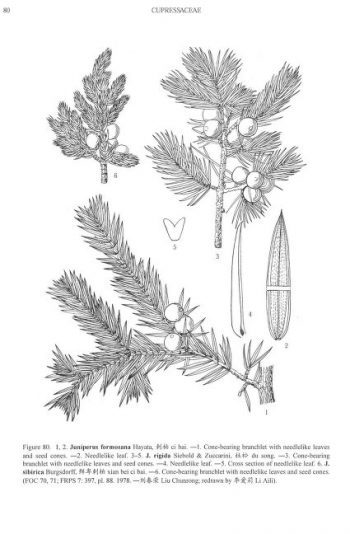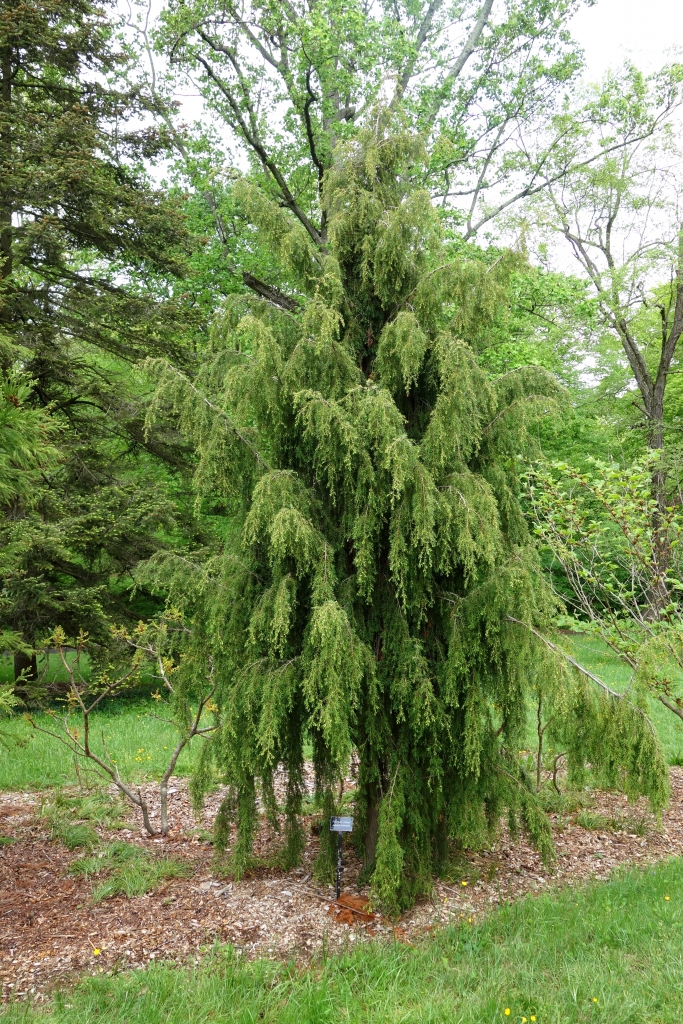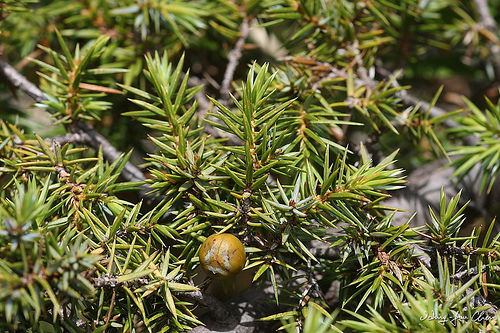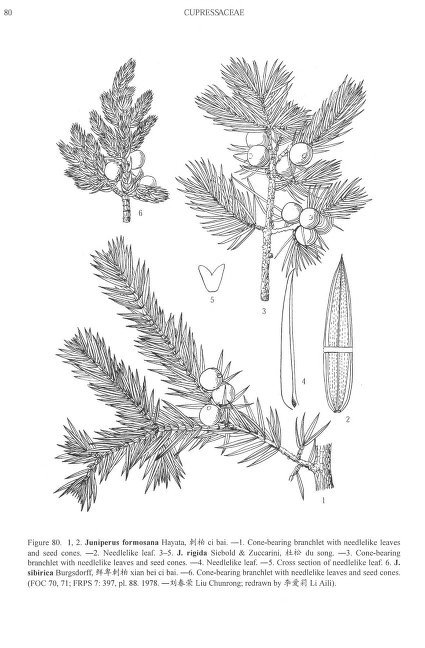Juniperus formosana as described in 1908 by BunzŠ Hayata (1874-1934), in Journal of the College of Science, Imperial University of Tokyo 25(19), is commonly known as Formosan juniper or prickly cypress, as well as ŠˆºæŸ (ci bai) in the Chinese language. Taiwan was formally known as Formosa (Latin for "beautiful") during the Japanese occupation when the species was described.
This species is closely related to other junipers with needle-like foliage growing in maritime regions of east Asia such as Juniperus rigida (Temple juniper) and J. taxifolia (Oasawara juniper).
Ethnobotany. Formosan juniper is a highly ornamental species, commonly planted in China but little-known elsewhere. Specimens with the smallest leaves have been found growing at the alpine timberline, resulting in many naturally dwarf selections and excellent Bonsai material.
Description. Formosan juniper is an evergreen coniferous shrub or small tree that grows to mature heights of 50 feet (15 m) tall, with a typically pyramidal or cylindric crown, spreading to ascending branches, and 3-angled, pendulous branchlets.
- Bark is gray-brown in color, peeling in horizontal strips.
- Leaves grow in whorls of 3, with a linear-lanceolate or linear-needlelike shape; each measuring 0.48 to 0.8 inch (1.2 - 2 cm) long by 0.048 to 0.08 inch (1.2 - 2 mm) broad. Needles are slightly concave adaxially, with 2 white, broad, stomatal bands separated by a narrow, green midvein, green in color and obtusely keeled abaxially, with a jointed, not decurrent, base, and a sharply pointed apex.
- Pollen cones grow axillary on the stem, with a globose or ellipsoid shape, measuring 0.16 to 0.24 inch (4 - 6 mm); containing 9 to 12 microsporophylls, in whorls of 3, each with 4 or more pollen sacs.
- Seed cones grow axillary on the stem, colored light reddish brown when ripe, glaucous or not, with a subglobose or broadly ovoid shape, measuring 0.24 to 0.36 inch (6 - 9 mm) by 0.24 to 0.32 inch (6 - 8 mm), with 6 fused scales in 2 alternating whorls, often 3-seeded, with a single seed on each scale of apical whorl.
- Seeds are ovoid-triangular shaped, measuring 0.16 to 0.2 (4 - 5 mm) by 0.12 to 0.14 inch (3 - 3.5 mm). Individual seeds are 3- or 4-ridged, including a base with 3 or 4 resin pits, and a pointed apex.
Distribution. This species is native to China - southern Anhui, western Fujian, eastern Gansu, Guizhou, western Hubei, southern Hunan, southern Jiangsu, Jiangxi, northeastern Qinghai, southern Shaanxi, Sichuan, Taiwan, southern Xizang, Yunnan, and Zhejiang provinces; growing as an understory tree in conifer or mixed forests, primarily
Chamaecyparis forests, at elevations of 9,000 to 11,000 feet (2,300 to 3,000 m) above sea level.
Hardy to USDA Zone 9 - cold hardiness limit between 20° and 30°F (-6.6° and -1.1°C).



